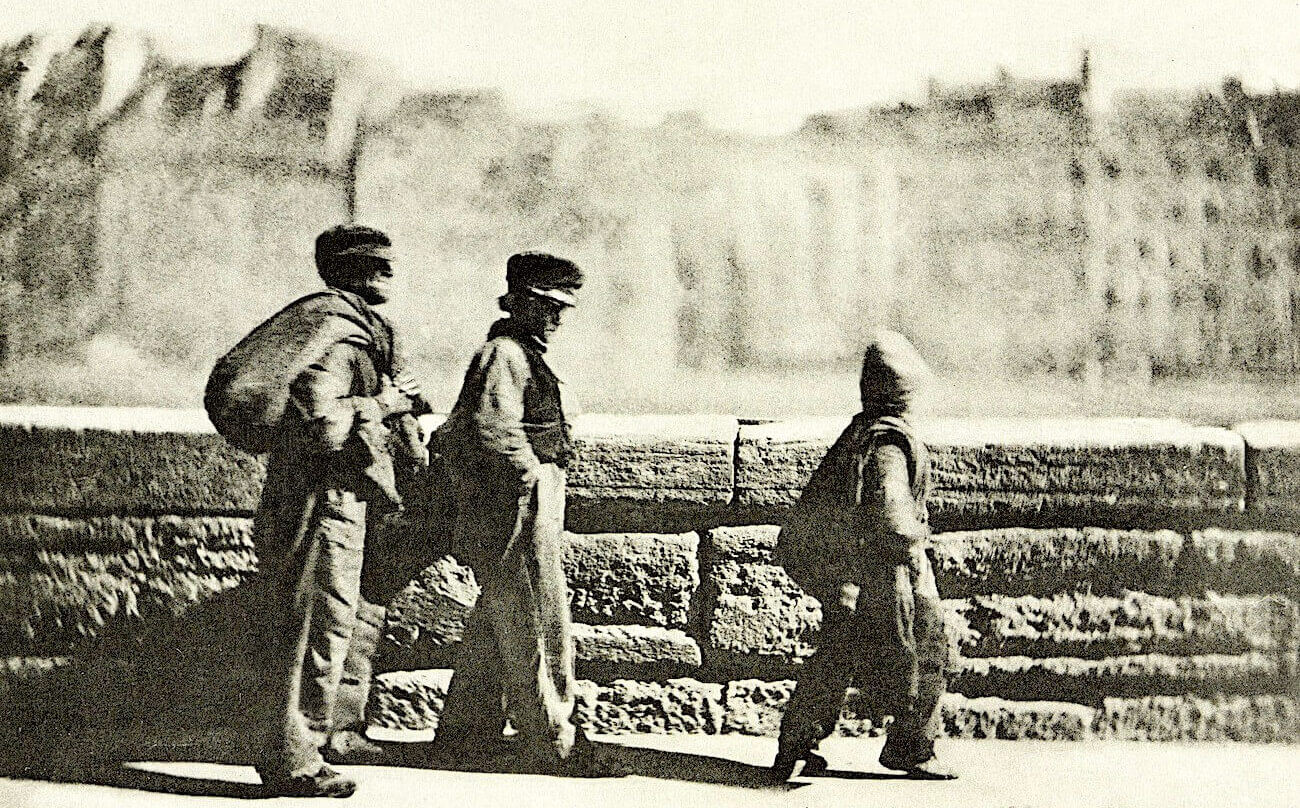Monday markets; chaos, cattle and the Bell
Every Monday morning from an early hour, the noise and smell outside the Bell was far beyond modern sensibilities. Over 12,000 beasts packed into a medium-sized village whose population was rarely above 3,000, feeding London with meat.
A local resident recalls falling asleep on Sunday evenings to the 'plaintive music' of cattle lowing in the meadows surrounding the town. The occupants of the Bell heard that sound travelling from Hemingford Meadow. Many visitors arrived Sunday night, staying in inns and hostels, soon in a 'happy' state.
Early Monday morning, cattle filled the Bullock Market, packed wall to wall as shown in the photograph below from the late 1800s. In 1921, the Mayor recalled earlier days of cattle queuing along the Waits, up Ramsey Road, along the full length of St Audrey's Lane, and down into Pig Lane and Needingworth Road.
 |
| Bullock Market, c1880. |
The air was thick with cursing as drovers tried to control the cattle. Many swear words would pass St Ivians by, such was the variety of accents. Irish, Welsh, and Scots mixed with West Country and Northern accents.
Some drovers treated their beasts cruelly. In 1835, a bullock took refuge in Mrs Robins's shop to escape abuse. Magistrates repeatedly fined drovers for mistreatment. Read Adams, the first Mayor of St Ives, wrote a letter in 1886 about the old Bullock Market. He sought to improve the lives of the cattle. Read wanted to lessen the cruel blows and brutal uproar. He wished the market was more like a place of business than a pandemonium.
Residents stepping out of the Bell needed to take care. The Bullock Market could be a dangerous place. Protective rails ran down either side to shield pedestrians and buildings. In 1801, a bullock rampaged through the Royal Oak pub, trampled up the stairs, crashed through the middle window frame and landed on the street. In 1858, infant Hector Rowell got caught on an escaped cow's horns but was rescued by his nursemaid.
The Backwater opposite the Bell was equally unpleasant. Dr Grove's 1873 annual report noted stagnant water, sewage, and 'a most unwholesome and poisonous gas'.
The first chimney sweep
When Daniel Winters took over the Bell, he began the first line of sweeps to occupy the premises. In 1841, he worked from Croft's Yard, off Crown Street with his son Daniel junior. In 1846, he accused William Bright of letting a boy under 20 climb a chimney, illegal under the law. Magistrates fined Bright lightly, later noting the difficulty of cleaning narrow chimneys.
By 1851, Daniel senior ran the Bell as publican and sweep. He employed his 10-year-old grandson Robert Wilkinson. Robert is an ancestor of comedian Joe Lycett and Robert's life story was told in a 2021 edition of the BBC programme Who DoYou Think You Are? Also present was Thomas Devine, a 40-year-old sweep from Jamaica, dead within ten years. Daniel senior died in 1851, aged 61; Daniel junior in 1859, aged 48.
 |
| Herbert Pratt, a St Ives chimney sweep, c1930s. |




No comments:
Post a Comment